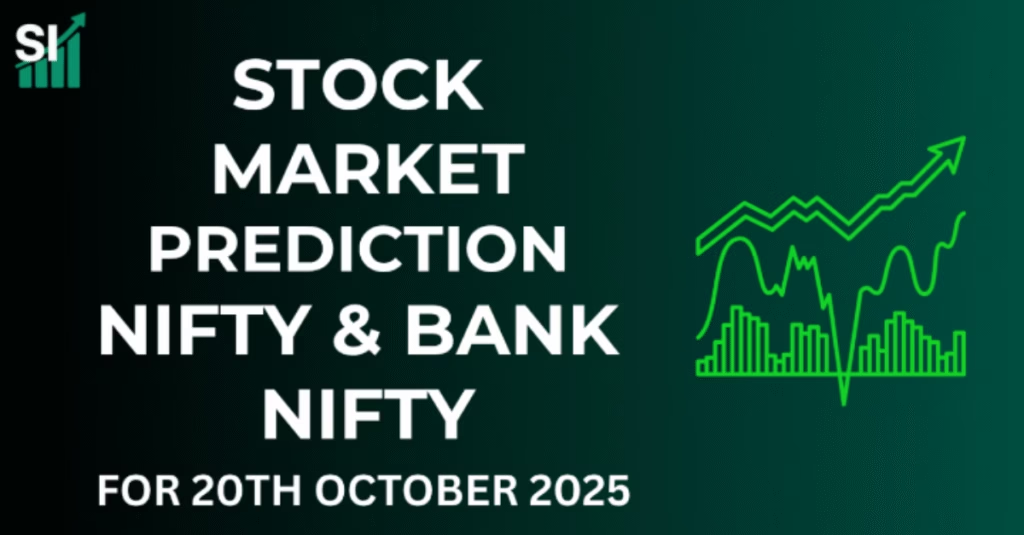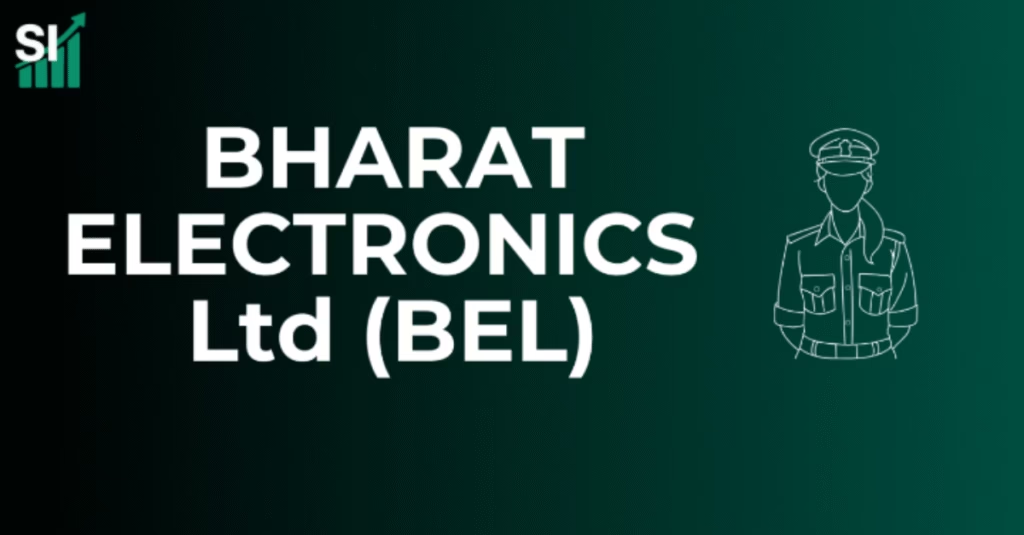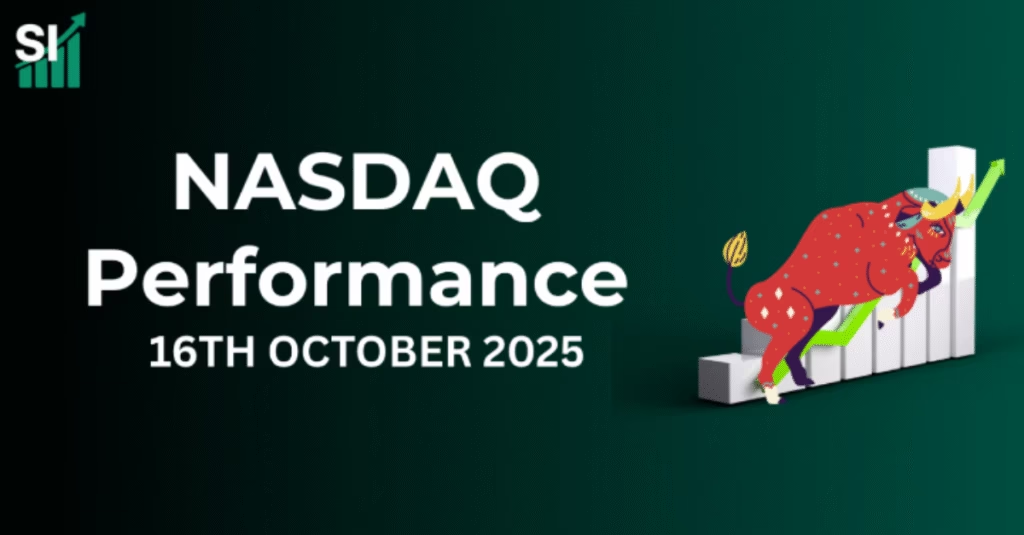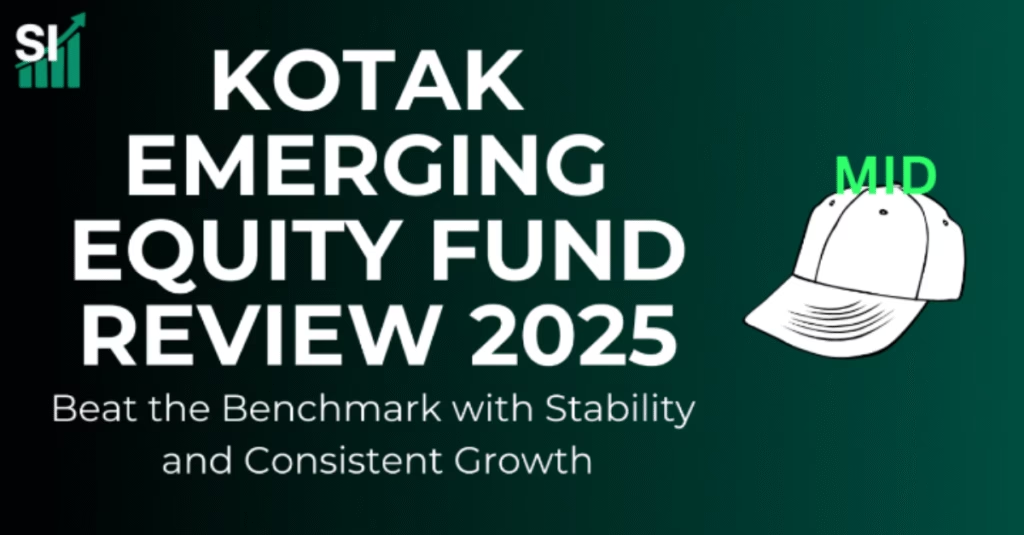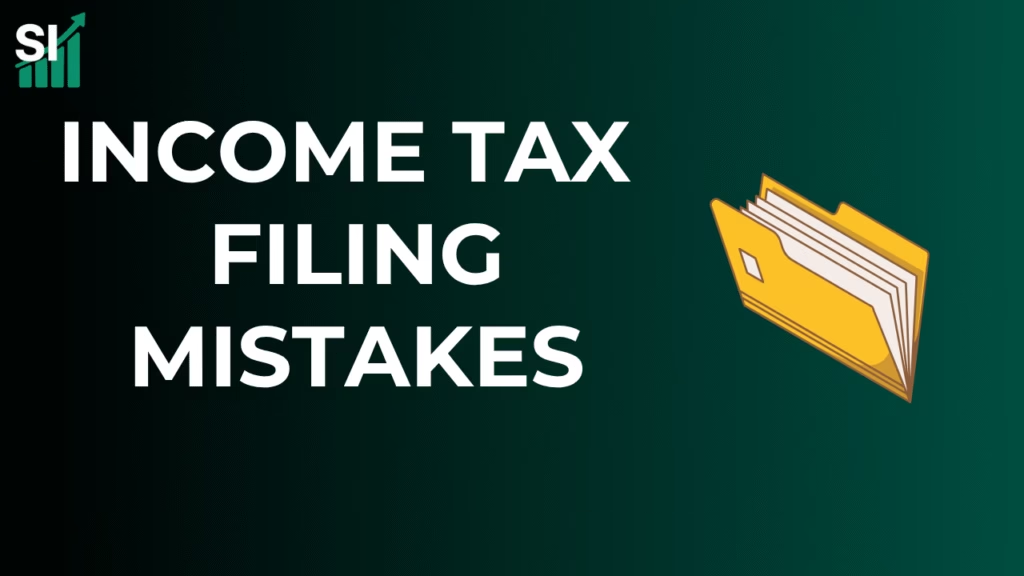Introduction
The performance data of various Nifty sectors may show how much each index has gained in the past, but it doesn’t always reveal which sectors are actually strong or weak in the present market structure. Price movement alone can be misleading — a sector that performed well earlier might be facing resistance now, while another sector showing mild gains could be building strong support for a new uptrend.
That’s where technical analysis becomes valuable. By studying support and resistance levels, trend strength, and momentum indicators, we can identify which sectors are likely to outperform in the upcoming sessions. This week’s Nifty Sectorwise Prediction for 27th October 2025 is based on such analysis — offering a clearer view of sectoral strength and potential rotation opportunities across the market.
Table of Contents
Sector Performance
Sectorwise Performance of Nifty Indices
| Nifty Sectors | Gain(%) from 7th April 2025 to 24th October 2025 | Gain(%) from 1st October 2025 to 24th October 2025 |
| Nifty Bank | 16.95 | 5.57 |
| Nifty Financial Services | 15.26 | 5.30 |
| Nifty Auto | 40.20 | 2.08 |
| Nifty Metals | 34.54 | 2.85 |
| Nifty FMCG | 10.05 | 2.87 |
| Nifty Pharma | 16.92 | 3.93 |
| Nifty Energy | 19.51 | 1.73 |
| Nifty Oil and Gas | 22.67 | 2.94 |
| Nifty Realty | 21.91 | 8.27 |
| Nifty CPSE | 19.53 | 2.53 |
| Nifty Media | 12.77 | -0.53 |
| Nifty IT | 14.94 | 6.78 |
Performance of Nifty Indices Based on Market Capitalisation
| Nifty Indices | Gain(%) from 7th April 2025 to 24th October 2025 | Gain(%) from 1st October 2025 to 24th October 2025 |
| Nifty 50 | 18.55 | 4.77 |
| Nifty Midcap 150 | 26.76 | 3.97 |
| Nifty Smallcap 250 | 29.31 | 3.01 |
| Nifty Microcap 250 | 27.65 | 3.18 |
Table 1: Sectorwise Performance of Nifty Indices
The first table highlights the sector-wise performance of major Nifty indices over two distinct periods — from 7th April 2025 to 24th October 2025, and from 1st October 2025 to 24th October 2025.
During the longer period (April–October 2025), Nifty Auto (40.20%), Nifty Metals (34.54%), Nifty Oil & Gas (29.31%) and Nifty Realty were the strongest performers, reflecting continued investor interest in cyclical and growth-oriented sectors. Nifty Bank (16.95%) and Nifty Financial Services (15.26%) also showed healthy gains, supported by credit growth and stable interest rate expectations.
In contrast, Nifty FMCG (10.05%) and Nifty Media (12.77%) underperformed relative to other sectors, indicating subdued demand or valuation pressure.
Looking at the shorter period (October 2025 only), Nifty Realty (8.27%) and Nifty IT (6.78%) led the market, suggesting sector rotation toward property and technology counters. Nifty Media (-0.53%) was the only sector that registered a minor decline during this time frame.
Table 2: Performance of Nifty Indices Based on Market Capitalisation
The second table compares the performance of Nifty indices segmented by market capitalisation over the same two time periods.
From April to October 2025, broader market segments significantly outperformed the benchmark Nifty 50. Nifty Smallcap 250 (29.31%), Nifty Microcap 250 (27.65%), and Nifty Midcap 150 (26.76%) all posted impressive gains, showing strong participation from mid- and small-cap stocks. The Nifty 50 rose by 18.55% during the same period.
In the shorter period (October 2025), gains were relatively moderate but consistent across categories. The Nifty 50 advanced by 4.77%, while mid-, small-, and micro-cap indices grew between 3.0% and 4.0%, reflecting a stable and broad-based rally.
Also Read
Determining the Strength of Sectors and the Benchmark Index
What Do We Need to Know?
To understand the real direction of the market, it’s important to know the strength of each sector in relation to its benchmark index. This helps identify which sectors are outperforming and which are lagging behind.
We should also compare the benchmark index with other major benchmarks to gain a broader market perspective. This comparison gives us clarity without having to perform a full technical analysis for every single sector.
Explanation with a Basic Example
Let’s consider an example for better understanding.
Suppose we plan to invest in Bajaj Auto using the “buy on dips” strategy.
Bajaj Auto is part of two benchmark indices — Nifty 50 and Nifty Auto.
Before buying, we should check the strength of these benchmark indices:
If both Nifty 50 and Nifty Auto are showing strength relative to their own benchmarks and other sectoral indices, the setup supports our investment decision.
However, if these indices are weak, even a strong stock like Bajaj Auto may underperform, and the “buy on dips” strategy might not deliver the expected returns.
In short, a stock’s performance is heavily influenced by the strength or weakness of its benchmark sectors.
Strength of Sectoral Indices
| NIFTY SECTOR INDICES | Closing On 24th October | All time High | Strength % |
|---|---|---|---|
| Bank | 57699 | 58577 | 98.48 |
| Pvt Bank | 28335 | 28827 | 98.26 |
| PSU Bank | 7817 | 8053 | 96.98 |
| Fin serv | 27395 | 27774 | 98.62 |
| Fin serv ex bank | 31288 | 31522 | 99.25 |
| IT | 35986 | 46088 | 71.93 |
| Ind Digital | 9257 | 10152 | 90.33 |
| Auto | 27108 | 27696 | 97.83 |
| EV | 3109 | 3531 | 86.43 |
| FMCG | 56348 | 66438 | 82.09 |
| cons durable | 38822 | 44426 | 85.56 |
| Pharma | 22357 | 23907 | 93.07 |
| Health care | 14862 | 15122 | 98.25 |
| Metal | 10347 | 10457 | 98.94 |
| Energy | 35626 | 45022 | 73.63 |
| Oil & Gas | 11624 | 13562 | 83.33 |
| Realty | 941 | 1157 | 77.05 |
| Infra | 9396 | 9704 | 96.72 |
| manufacturing | 15114 | 15769 | 95.67 |
| media | 1540 | 3675 | -38.64 |
| CPSE | 6615 | 7661 | 84.19 |
| Defence | 8182 | 9195 | 87.62 |
| cap Mkt | 4615 | 4768 | 96.68 |
| commodities | 9227 | 9896 | 92.75 |
| Consumption | 12520 | 13057 | 95.71 |
| Tourism | 8952 | 9497 | 93.91 |
Strength of Broad Based Nifty Indices
| NIFTY INDICES | Closing On 24th October | All time High | Strength % |
|---|---|---|---|
| Total Market | 13317 | 13842 | 96.06 |
| Nifty 500 | 23686 | 24573 | 96.26 |
| Nifty50 | 25795 | 26277 | 98.13 |
| midcap | 21891 | 22515 | 97.15 |
| small cap | 17219 | 18688 | 91.47 |
| Microcap | 23654 | 26476 | 88.07 |
Interpretation of Sectoral Strength
From the above table, it is evident that financial and banking-related sectors continue to dominate the market in terms of strength.
Financial Services, Banks, Metal, Auto, and Healthcare indices show the highest resilience, all maintaining strength levels above 98%, indicating strong momentum and consistent performance near their all-time highs.
Sectors such as Private Bank, Infra, and Capital Market are also showing notable strength, suggesting that these areas remain supportive for investment opportunities or short-term trading setups.
On the other hand, defensive and underperforming sectors like FMCG, Realty, Energy, IT, and Media are significantly below their highs.
IT has slipped to around 71.93%, reflecting sectoral weakness and investor caution.
The Media index stands out as the weakest, showing a negative strength value (-38.64%), which suggests it is trading far below its previous highs and lacks recovery signals at present.
Overall, the market momentum is broadly concentrated in financials, metals, and autos, while traditional defensives like FMCG, IT, and Media are losing ground.
Why Nifty Auto, Nifty Financial services, Nifty Bank and Nifty Metal are performing well
Nifty Auto, Nifty Financial services, Nifty Bank, and Nifty Metal have been performing well due to sector-specific catalysts, domestic and global tailwinds, and strong earnings reports
. Key drivers include the government’s GST rate cuts and supportive policies, a surge in demand, improved corporate earnings, and strong foreign and domestic investment inflows.
Nifty Auto:
- Government incentives and GST cuts: In September 2025, the GST Council confirmed a simplified two-slab tax structure, with automobiles being major beneficiaries. Automakers subsequently announced price reductions, which boosted demand.
- Favorable policies: Initiatives like the Production-Linked Incentive (PLI) schemes for electric vehicles and the vehicle scrappage policy have catalyzed growth.
- Strong demand: Increased demand, especially for smaller vehicles and premium variants, is being fueled by a revival in consumer confidence, rising incomes, and a recovery in rural demand.
- Upcycle begins: Experts believe the auto sector has entered a long-term growth cycle after years of muted growth.
Nifty Financial Services & Nifty Bank:
- Robust earnings and investor faith: H1 2025 results showed a healthy revival in corporate earnings for the financial sector, boosting investor confidence. Q2 FY26 earnings of banks further fueled the rally.
- Supportive macroeconomic environment: Easing geopolitical risks, falling crude oil prices, and a weaker US dollar have encouraged foreign portfolio investments (FPIs) into Indian equities.
- Bullish momentum: Strong technical structures, persistent put writing at lower strikes, and a “buy-on-dips” strategy indicate continued bullish momentum.
- Public Sector Banks (PSBs): PSBs have shown a strong structural turnaround, evidenced by improved asset quality and healthy balance sheets, leading to a potential re-rating. Both PSU and private banks are contributing to the rally.
- Heavyweight support: Key stocks like HDFC Bank and ICICI Bank have driven the index higher.
Nifty Metal:
Strong infrastructure growth: India’s significant growth in infrastructure and construction is driving up demand for metals.
Global demand and supply factors: Global demand for metals like steel, aluminum, and copper is rising due to economic recovery and infrastructure projects. Additionally, factors like a copper crunch, China’s steel output cuts, and a weaker US dollar are contributing to the rally.
Favorable domestic conditions: Strong provisional steel performance and expectations of higher prices, along with safeguard duties protecting domestic steel mills, support the sector.
Increased demand from other sectors: GST rate cuts, which are expected to drive demand for autos and other durables, are indirectly boosting the metal sector that supplies these industries.
Why Nifty IT and Nifty Media are Underperformers
Underperformance in the Nifty IT and Nifty Media sectors can be attributed to distinct factors impacting each industry. The Nifty IT index has struggled due to global macroeconomic headwinds, reduced enterprise spending on technology, and stiff competition. The Nifty Media index has faced challenges from intense competition, weak consumer demand, and regulatory changes.
Nifty IT: The impact of global factors
- Weak global macroeconomic environment: The IT sector is heavily reliant on global markets, particularly the US and Europe. Concerns over high US inflation and the possibility of delayed interest rate cuts have led to a cautious approach from global clients, who are tightening their discretionary IT budgets. This has particularly affected projects in sectors like banking and finance, retail, and automotive.
- Persistent FII outflows: Foreign Institutional Investors (FIIs) were significant net sellers in the Indian market for most of 2025. This was especially pronounced in export-oriented sectors like IT, contributing to persistent selling pressure.
- Revenue and earnings pressure: After a pandemic-driven boom, the natural normalization of IT spending combined with weak demand led to underwhelming revenue growth for many IT companies. Some firms have also downgraded their forward guidance, leading to cautious investor sentiment.
- Valuation adjustments: At its peak, the Nifty IT index traded at high valuations. This has since corrected significantly as earnings growth has been harder to come by, causing a sector-wide re-rating.
- Cost and competition: The sector has faced rising costs, including higher visa fees in the US, while competing with global players.
Nifty Media: Challenges in a competitive landscape
- Intense competition: The media industry is fiercely competitive, with traditional players vying for audience attention and advertising revenue against a multitude of digital platforms and over-the-top (OTT) services.
- Weak consumer demand: Factors like high inflation and general market caution can reduce consumer spending on entertainment, hitting profitability for media companies, especially multiplexes like PVR INOX.
- Regulatory pressure: The Securities and Exchange Board of India (SEBI) has implemented new regulations for derivatives trading, which can increase trading costs and reduce speculative activity. While this affects the broader market, it adds to the cautious sentiment, and a negative market mood generally affects the media sector.
- Foreign investment shifts: A broader market shift away from Indian equities by FPIs in 2024 and 2025, driven partly by more attractive valuations in other emerging markets like China, added downward pressure on the market and the media sector by extension.
- Sectoral rotation: Investors frequently move out of underperforming or less-favored sectors, and during periods where other industries like auto and banking shine, sectors like media can see outflows.
Summary
While the Nifty IT index is facing cyclical headwinds largely tied to the global economy and enterprise spending, the Nifty Media sector’s underperformance is driven by structural issues within the domestic market, including fierce competition and shifting consumer habits.
Interpretation of Broad-Based Nifty Indices
Looking at the broad market indices:
The Nifty 50 remains firm with a strength of 98.13%, indicating strong support near the highs and suggesting that the overall market trend remains bullish.
The Midcap and Nifty 500 indices also display solid strength above 96%, implying healthy participation from broader market segments beyond large caps.
However, Smallcap and Microcap indices are showing lower strength levels (91.47% and 88.07%, respectively), hinting at partial profit booking or cooling-off in smaller companies after their earlier rallies.
In summary, the market breadth continues to favor large and mid-cap stocks, while small and microcaps appear to be consolidating.
This alignment between sectoral and index strength supports a cautious but optimistic outlook — favoring quality stocks in leading sectors that are closer to their all-time highs.
Key Takeaways / Conclusion
- The Financial Services , Metal, Healthcare, Auto and Private Banking sectors currently exhibit the strongest momentum, staying closest to their all-time highs.
- The Nifty 50 and Midcap indices remain robust, indicating a broad-based market strength led by large and mid-cap segments.
- IT and Media are the weakest sectors, reflecting either consolidation or extended corrections.
- Investors should focus on strong sectors aligning with benchmark performance while avoiding weak ones during uncertain phases.
- Overall market sentiment remains optimistic but selective, favoring sectors with consistent strength and recovery potential.
Frequently Asked Questions (FAQ)
1. What does sector strength mean in this analysis?
Sector strength indicates how close the sector’s current closing price is to its all-time high. The closer it is, the stronger the sector’s momentum.
2. Why compare sectors with their benchmark indices?
Because each stock or sector’s performance depends on its benchmark trend. Strong benchmarks often support stronger price recoveries in individual stocks.
Which sectors are currently the strongest?
As of 24th October 2025, Financial Services, Metal, Banking, Healthcare and Auto sectors top the list, staying above 97% strength levels.
4. Which sectors are underperforming?
IT, Media, Energy, Realty and FMCG sectors are showing the weakest strength, with Media trading far below its earlier highs.
5. How reliable is strength percentage for investment decisions?
Strength helps identify strong or weak areas of the market but should be used along with other indicators like volume, support, resistance, and trend confirmation.
6. What does the analysis suggest for investors?
Investors can focus on sectors and indices maintaining higher strength levels while being cautious in areas showing sustained weakness or poor recovery.
Disclaimer – Smart Investello Research and Analysis
The data and charts presented here are for educational and informational purposes only. They are not financial advice or investment recommendations.
Market conditions change frequently, and readers should perform their own analysis or consult a financial advisor before investing.
Charts or visuals used from third-party sources are shared strictly for educational purposes, and no responsibility is taken for any actions, outcomes, or advertisements appearing alongside this content.



